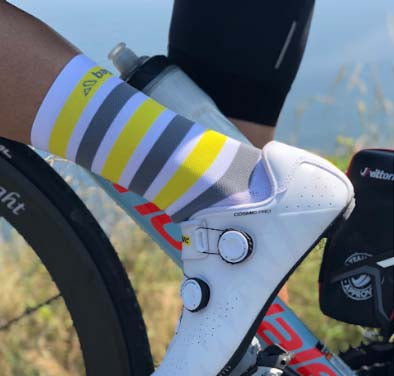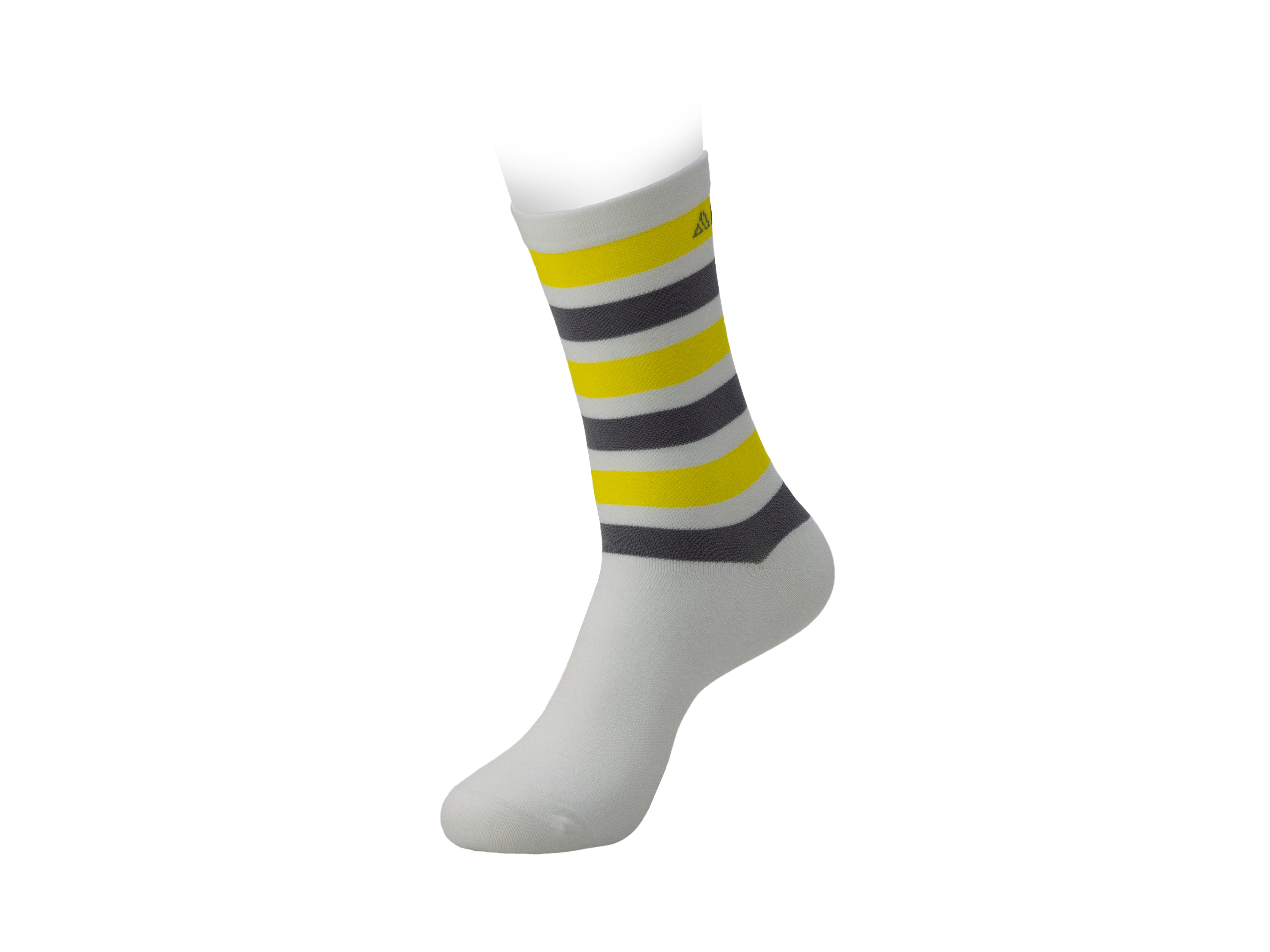#74 Garmin vs SRM
The Harvard Mark I , built by IBM in 1947, was the world's first electromechanical computer . It took up an entire room (16 meters long by 2.4 meters high), weighed over five tons, and took between three and five seconds to complete a simple calculation. Looking at it from a 21st-century perspective, it might seem like a pile of junk, but for its time, it was an extraordinary breakthrough. And it only cost $200,000!
Today, 71 years later, we have devices the size of a pack of cigarettes with such advanced technology that it seemed like science fiction back then. We can go to a store and for €300 buy a bike computer capable of telling us how long we've been riding, how fast we've been riding, our heart rate, how many watts we've used, the distance we've traveled, and much more, such as storing this information or sharing it on our social media.
Technology has advanced tremendously, and one of the sports that has benefited most from this has been ours.
Two of the brands that have played the most important role in this exciting evolution have been Garmin and SRM . Let's analyze both to see which one is best for us.
GARMIN
Its name comes from the names of its two founding partners: Gary Burrell and Min Kao . The company was founded in 1989 in an office in Kansas and from day one has been dedicated to developing and implementing GPS technology worldwide.
It should be remembered that this global navigation system is based on data provided by 24 satellites orbiting the Earth simultaneously.
Garmin models are known for their simplicity , reliability , the amount of data they offer, and compatibility with all types of sensors and smartphones.
The main drawback is that their touch screens, as they are made to withstand rain, lack much sensitivity and may sometimes not respond at first, especially if you use them with gloves.
The high-end Garmin models currently on the market are:

Edge 520 : An advanced race-ready cycling computer. Tracks Functional Threshold Power (FTP), watts/kg, and pedaling dynamics when used with the Vector or Vector 2 power sensor. Offers real-time Strava segments. Also compatible with ANT+ trainers, view and monitor your data just as if you were on the road.
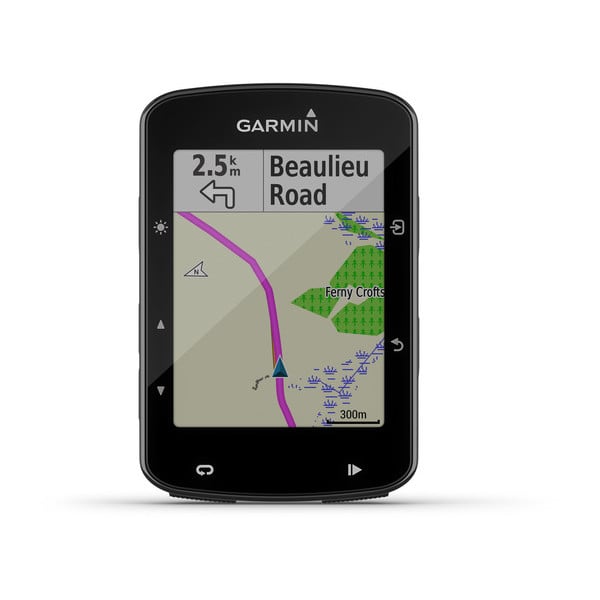
Edge 520 Plus : Advanced GPS cycling computer for racing and navigation. It includes advanced navigation features and preloaded Garmin Cycle Map with turn-by-turn directions, both on and off-road. Stay connected with LiveTrack and GroupTrack, receive smart notifications, send rider-to-rider messaging, and use the built-in incident detection.
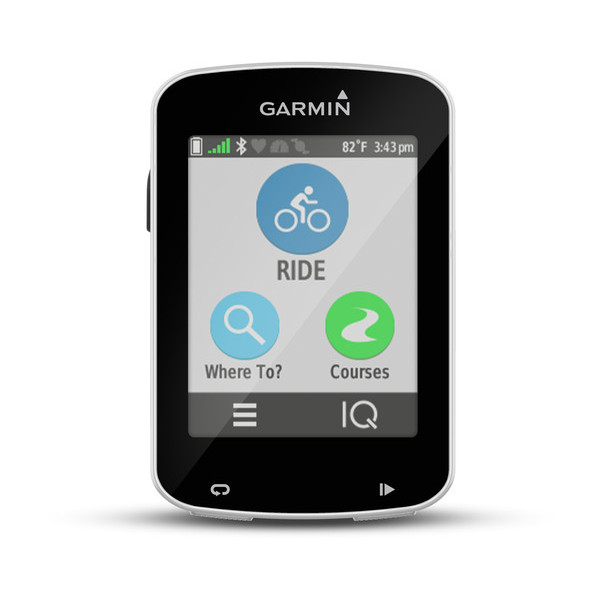
820 : Advanced cycling computer with Cycle Map and online features. The GroupTrack1 feature lets you keep track of the riders in your group. Includes an incident detection system. It's compatible with cycling-related accessories, such as Varia Vision, smart bike lights, and Varia Rearview Radar. It offers advanced performance monitoring and bike-specific turn-by-turn navigation.
1000 : An advanced bike computer with a 3-inch color touchscreen. You can enter distance and other parameters, and choose from three round-trip route options. It features connected features such as instant uploads, incoming call and text message notifications, real-time tracking, and weather information. It's the first GPS bike computer to offer incident detection via an integrated accelerometer. It connects to any smartphone.
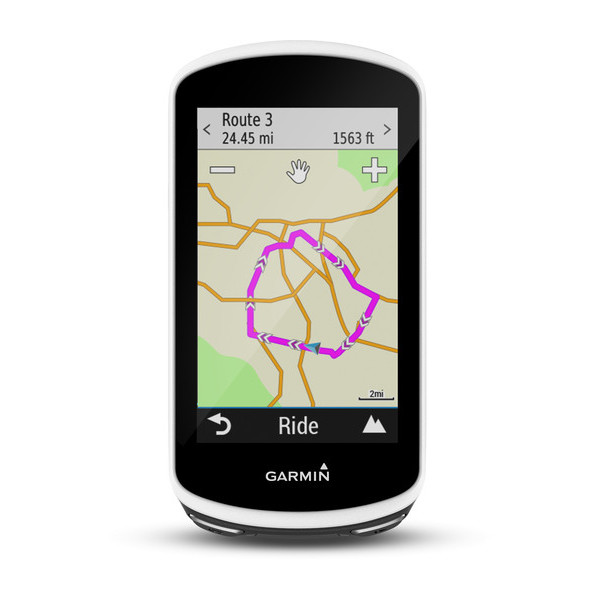
1030 : The ultimate in connected GPS cycling computers, the jewel in the crown. Thanks to its Trendline system, it finds the best route among the roads (and trails) most frequented by other cyclists. It also allows you to create your own routes. It comes standard with the Garmin Cycle Map advanced navigation system, turn-by-turn navigation, and hazard warnings. Its battery lasts up to 20 hours. It allows you to send messages between cyclists or respond to missed calls and texts with predetermined messages (such as "I'll be home soon"). Its Strava Live Segments feature lets you compete virtually with other cyclists, and with the TrainingPeaks Connect IQ app, you can upload your planned training session. With the Best Bike Split Race Sync app, the race power plan, you can adjust your weight, power, and resistance to achieve your best time.
SRM (Schoberer Rad Messtechnik)
Another leading company in the field of cycle computers is SRM , founded in 1986 by German engineer and cycling enthusiast Ulrich Schoberer . This scientist wanted to measure training performance as accurately as possible and considered heart rate to be an inadequate method. Using heart rate didn't seem like the best idea because it took time to increase or decrease and depended on numerous external factors (temperature, wind, etc.). Furthermore, he was looking for a method that would take measurements during training or competition, not in a laboratory.
After much study, he concluded that power was the magnitude that best reflected the work a cyclist was doing at any given moment. Now he just needed to figure out how to measure it most efficiently. After extensive testing with sports scientists, coaches, and professional cyclists from Italy, Great Britain, the United States, and Germany, he concluded that the crank-axle and chainring assembly provided the most accurate data and focused on developing a prototype.
Once he brought it to market and saw the growing demand from professionals and amateurs, he worked on creating different versions of the same equipment: one for road , one for mountain and one for track .
Among its most recognized users we can find Greg Lemond, Mario Cippolini, Paolo Bettini, Erik Zabel and Mark Cavendish , as well as national and university teams.
SRM has grown from a one-person project to a company present in dozens of countries, recognized for the quality and precision of its products.

The characteristics of SRM
SRM has a very different personality from Garmin. It's a brand with a much more minimalist aesthetic, and rather than creating a wide range of products with different features, it releases a model every few years ( PC7, PC8, etc. ) and makes the most of it until it's time to move on to the next model. The current model on the market is the PC8 (Power Control 8), which comes with the display, the crankset, cables, sensors, and all the necessary accessories.
It is more focused on professional cycling (although many amateurs also love this brand) and is better known for the accuracy of its measurements than for the beauty of its design.
It has a computer program where you can download data for each matchday and view the analysis generated. The display can be connected via Wi-Fi to send the data to your profile.
Its screen is more horizontal, has several customizable settings (depending on the data you want to see), and is less flashy than the Garmin's. Surprisingly, it's not touch-enabled.
The price of the display is around €750 and the bottom bracket with the power meter is around €3,400.
So which one should I buy?
Both are excellent devices, but each has a different target audience:
Garmin is aimed at enthusiasts, both novice and advanced. It offers a wide variety of models to suit all budgets and needs (from more basic and affordable models to truly comprehensive ones with a tremendous amount of data). It takes greater care with its products' aesthetics and offers extensive possibilities for sharing your data over the Internet. This company was born in the world of satellite positioning and focuses on providing users with as many services as possible.
SRM is aimed at an almost strictly professional audience (or at very advanced enthusiasts willing to invest a considerable amount of money). The visual aspect is somewhat neglected to focus on the extraordinary performance and accuracy of its data. It's a brand that was born in the world of sports medicine and is gradually becoming more concerned with aesthetics, but it is still very much influenced by its origins.
What model do professionals use?
Chris Froome
For the general public, Chris Froome is the first cyclist to make them aware of the importance of watts (not that he's the pioneer, but the one who reached a less knowledgeable audience and made them pay attention to "that thing on your handlebars"). In many stages of the Grand Tours, the British-Kenyan cyclist constantly checked his cycle computer to see if it was a good time to attack or not, rather than relying solely on his own feelings.
At first, he used only SRM, but in his fourth Tour win (2017), he used the Garmin Edge 510 and 810 models (with altimeter, maps, GPS, and touchscreen), even though there are more recent models available. For data collection, he used a power meter on his left crank, a speed sensor, and a heart rate monitor.
Nairo Quintana and Alejandro Valverde
The Movistar Team has Garmin as its official partner, so all its riders use Garmin models. Quintana and Valverde typically use the Garmin Edge 1030 (which self-regulates screen brightness, has its own backlight, is well-compatible with all types of sensors, and integrates perfectly with Shimano Di2 electronic shifting).
Peter Sagan
The current world champion and his team, Bora-Hansgrohe, use the Wahoo Elemnt Bolt, a cycle computer with all the features a professional could ask for and one peculiarity: in their advertising they always emphasize that it is the most aerodynamic model on the market.
Alberto Contador
In his final season as a professional (2017), the Pinto native could be seen using the SRM Power Control 8 power meter. Now retired, he uses a Bontraguer model manufactured by Garmin.
And you, whatever model you ride, don't forget your Baggicase , the waterproof cyclist's phone case. It's perfect for professionals and amateurs alike and is made in Spain using only top-quality materials.
